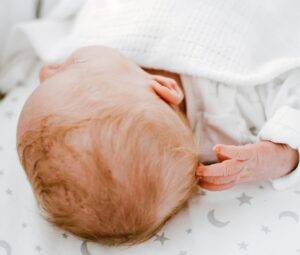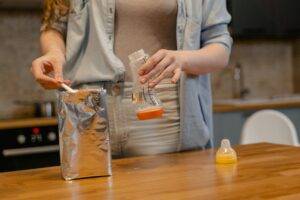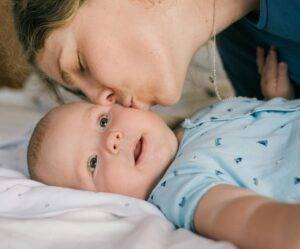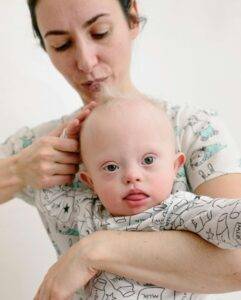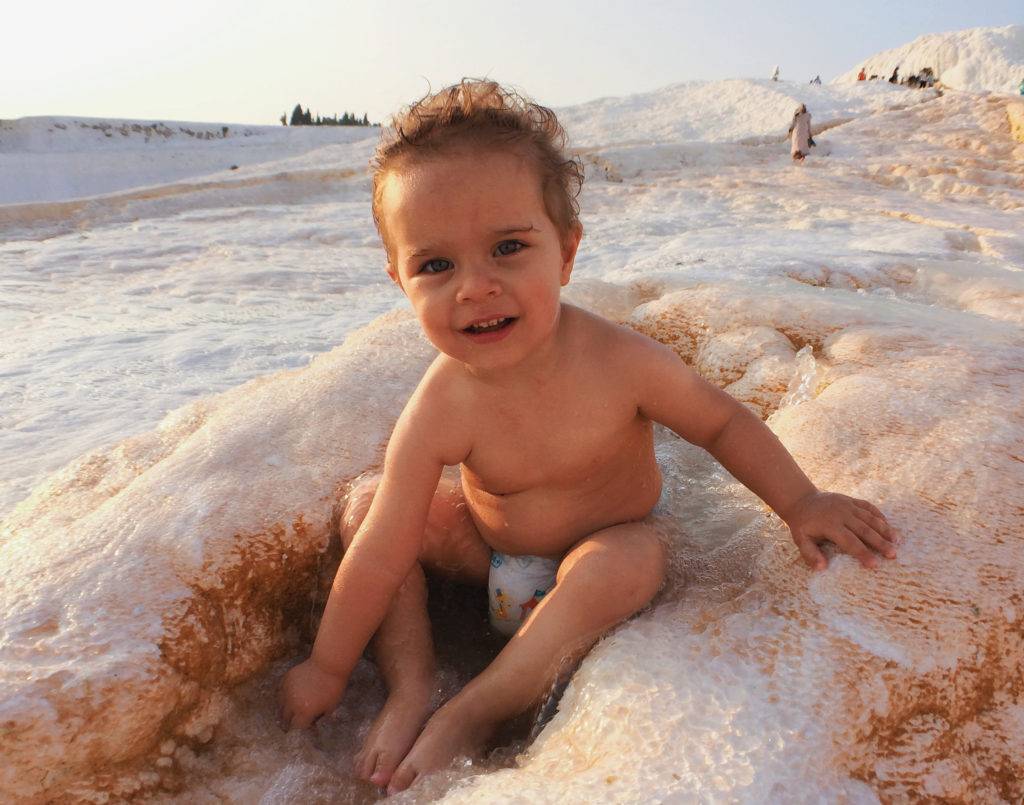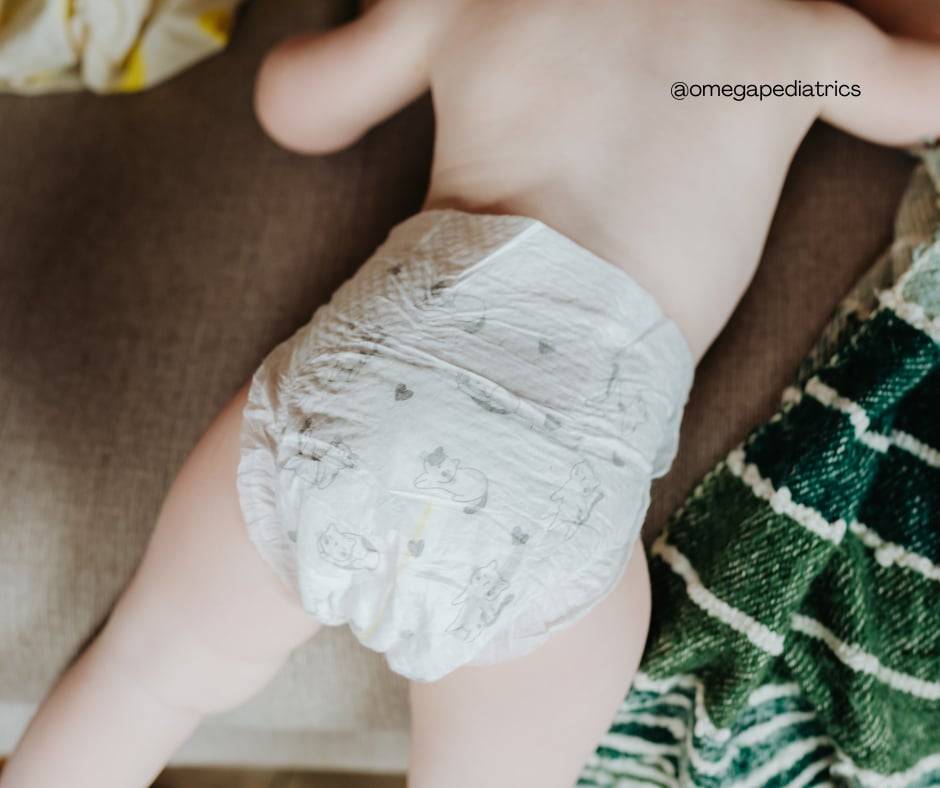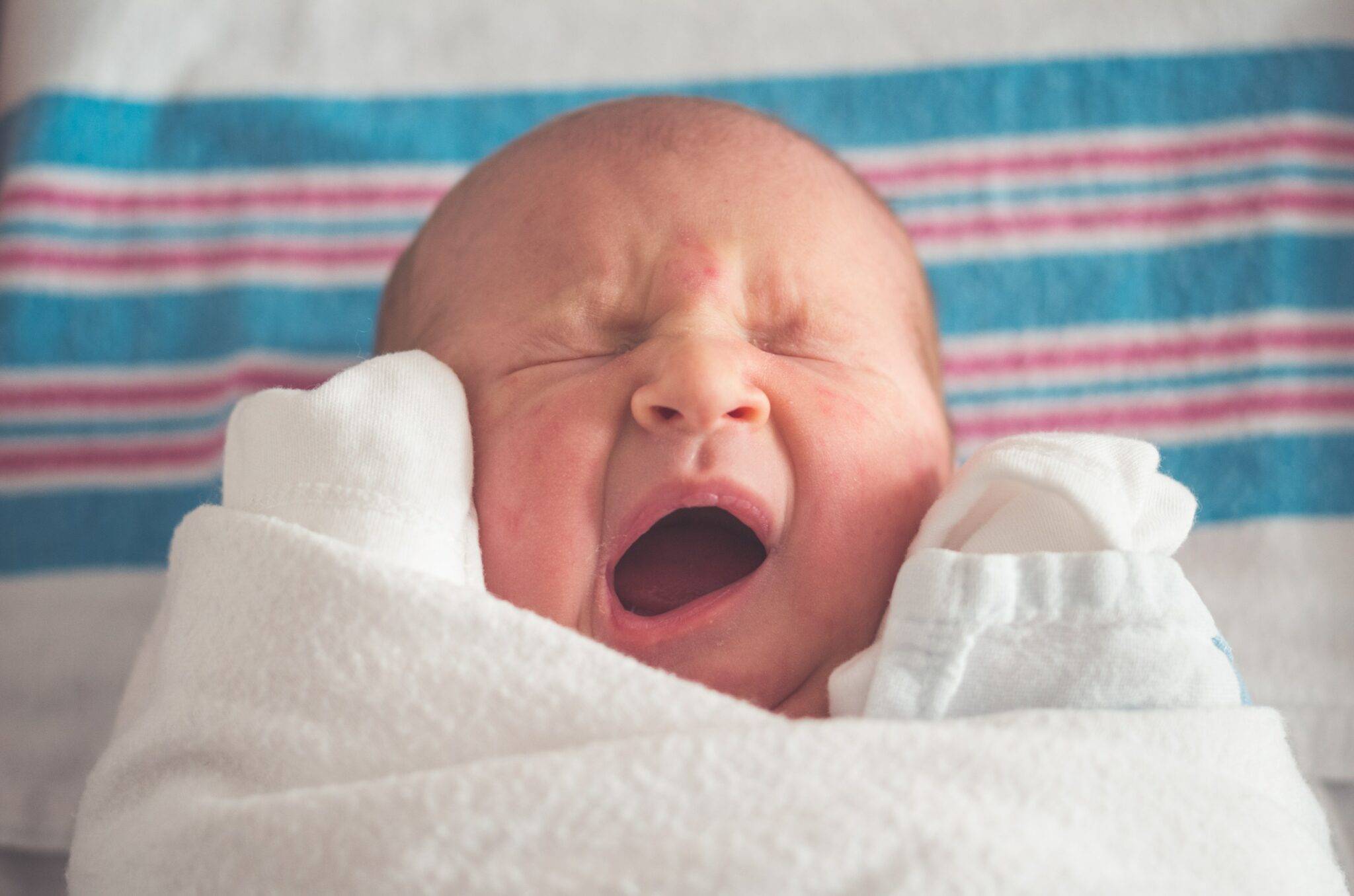As a new parent, you probably marvel at every detail of your baby’s appearance, from the shape of their nose to their delicate little fingers. You also noticed that your newborn baby hair fall out, and naturally, this could raise concerns. You may ask yourself, “Is this normal?” or “Is something wrong with my baby’s health?”
The good news is that newborn hair loss is normal and happens within the first few months. While it’s surprising and alarming to see clumps of hair left on your baby’s crib sheets or in their brush, your newborn baby hair fall out is temporary and part of a natural process.
This article will explain the common causes of newborn hair loss, provide insights on what to expect, and offer practical tips on caring for your baby’s delicate scalp. By understanding why your newborn baby hair fall out, you can confidently manage this phase of your baby’s development.
What Is Newborn Hair Loss?
Newborn hair loss, often referred to in medical terms as telogen effluvium, occurs when your baby’s hair growth cycle temporarily shifts. While some are born with a full head of hair, others may arrive with just a few strands. Regardless of how much hair your baby is born with, it’s common for this hair to fall out in the first few months of life.
Pregnancy hormones influence the growth of your baby’s hair follicles. After birth, these hormone levels drop rapidly, triggering a shift in the hair growth cycle. The hair stops growing and enters a resting phase before eventually falling out, which is when you notice your newborn baby hair fall out.
New hair growth replaces fallen hair, but this process takes time. The grown hair looks different from the initial baby hair—a different color, texture, or thickness, a part of normal baby development. As you understand newborn hair loss, let’s dive into the causes and how it impacts your baby’s health.
Why Does Newborn Baby Hair Fall Out?
1. Hormonal Changes After Birth
This is one of the most significant reasons for newborn baby hair fall out. While in the womb, your baby was exposed to elevated levels of maternal hormones that foster hair growth. This is why some babies are born with a full head of hair. However, after birth, these hormone levels drop rapidly.
Without those extra hormones, your baby’s hair enters a resting phase in which the hair stops growing and eventually sheds. This process usually happens at 2-3 months old but can start earlier or later depending on your baby’s growth pattern. Most importantly, this hair loss is temporary. As your baby’s hormone levels regulate, the hair follicles will resume growing new hair. The newly grown hair might be different in color or texture, but this is normal and a healthy part of development.
2. Friction from Sleeping Positions
Babies spend time lying down, especially during the early months when they sleep for long stretches. This leads to rubbing of their head against crib sheets, car seat cushions, or other surfaces. This consistent friction causes a noticeable bald spot, especially on the back of the head, where it makes the most contact with the bed.
This type of hair loss, sometimes called positional hair loss, isn’t a cause for concern. It’s a simple result of your baby spending time lying in one position. As your baby grows, they’ll spend more time sitting up, rolling over, and exploring the world.
Once your baby becomes more mobile and spends less time lying on their back, this friction-related hair loss resolves. New hair growth starts to fill in the bald spot. Rotate your baby’s head position during naps or encourage tummy time to reduce friction and prevent further hair loss.
Some parents use a soft, breathable baby pillow to reduce pressure on the back of the head. Just remember to prioritize safe sleep practices, which recommend babies sleep on their backs to reduce the risk of Sudden Infant Death Syndrome (SIDS).
3. Normal Hair Growth Cycle
Everyone experiences a hair growth cycle, and babies are no exception. Hair growth happens in three phases: a growth phase (anagen), a resting phase (telogen), and a shedding phase. The cycle is faster in newborns, and many babies’ hair enters the resting phase shortly after birth. During this resting phase, hair doesn’t grow and is likely to fall out. This happens all over the scalp or in patches. Once the resting phase is complete, the hair follicles switch back to the growth phase, and new hair emerges.
Note that each baby’s hair growth cycle is unique. Some babies experience rapid hair loss within the first two months, while others lose their hair gradually. In either case, this cycle of shedding and regrowth is normal. While it’s unsettling to see your newborn baby hair fall out or thin, rest assured that new hair will soon grow.
4. Cradle Cap (Seborrheic Dermatitis)
Also known as seborrheic dermatitis, is a common skin condition that contributes to newborn baby hair fall out. It presents as flaky, yellow, or white scales on the baby’s scalp. These scales are oily or greasy and cause the hair in the affected areas to thin or fall out.
The cause is an overproduction of oil in the baby’s skin, which traps dead skin cells on the scalp. Although it looks uncomfortable, the cradle cap isn’t bothersome and not a cause for concern. However, in some cases, it leads to temporary hair loss in the areas where the scales are thickest.
To manage, wash your baby’s hair with baby shampoo and use a soft-bristle brush to loosen the flakes. Avoid using harsh chemicals or scrubbing too hard, as this irritates your baby’s delicate scalp. Cradle cap typically resolves within a few weeks or months.
5. Nutritional Deficiencies
Although less common, nutritional deficiencies contribute to hair loss in newborns. Hair growth requires a steady supply of nutrients, including protein, iron, and vitamins (like vitamin D and biotin). Exclusively breastfed or formula-fed babies receive the nutrients through their milk.
However, a deficiency in certain nutrients impacts hair growth. For example, a lack of iron or protein leads to weak hair prone to falling out. This is likely in babies with feeding issues or underlying health concerns that affect their ability to absorb nutrients.
If you’re concerned about your baby’s nutritional intake, especially if they have poor growth or weight gain in addition to hair loss, consult your pediatrician. They assess your baby’s health and recommend adjustments to their feeding if needed.
For more advice on newborn nutrition, check out this comprehensive guide on ensuring proper nutrition for your baby.
- Ultimate Guide: 6 Steps to Create a Newborn Feeding Schedule for Happy, Healthy Babies
- Exploring Newborn Feeding for Proper Nourishment: Schedules and Tips for New Parents
How to Care for Your Baby’s Hair and Scalp
While newborn hair loss is usually not a cause for concern, there are several steps to care for your baby’s scalp and promote healthy hair growth during this phase:
- Keep the Scalp Clean and Moisturized: Wash your baby’s scalp regularly with baby shampoo to keep it clean and oil-free, thus preventing cradle cap. You don’t need to wash your baby’s hair daily; a couple of times a week is sufficient. After washing, thoroughly rinse out any shampoo to prevent product buildup. If your baby has a dry or flaky scalp, gently massage with a small amount of baby or coconut oil. This moisturizes the skin and loosens any flakes without being too harsh.
- Brush Gently: After washing, use a soft-bristle baby brush to detangle the hair and stimulate the scalp. Brushing your baby’s hair removes dead skin cells and encourages blood circulation for healthy hair growth.

- Avoid Overhandling: While it’s tempting to touch or style your baby’s hair frequently, minimize excessive handling of their scalp. Overhandling leads to more friction and, consequently, more hair loss. Be gentle when washing, brushing, and drying your baby’s hair.
- Soft Bedding and Supervised Tummy Time: Use soft, breathable bedding in your baby’s crib or bassinet to reduce friction-related hair loss. Also, incorporate supervised tummy time during the day to help your baby spend less time on their back, reducing pressure on the back of the head. Tummy time strengthens your baby’s neck and shoulder muscles and prevents flat spots on the back of the head, which are associated with hair loss.
- Monitor Your Baby’s Nutrition: Ensure your baby receives adequate nutrition through breast milk or formula. Consult your pediatrician for guidance on nutritional intake. A well-nourished baby is likely to grow healthy, strong hair.
When Should You Be Concerned?
In most cases, newborn hair loss is a normal part of development and not something to be concerned about. However, there are a few instances when it’s necessary to consult a healthcare provider. You may seek advice from your pediatrician, who will evaluate the condition and recommend appropriate steps.
- If there are rashes, sores, or scabs on the scalp accompanying the hair loss
- If the hair loss seems excessive or doesn’t start growing back by 6 months
- If you notice your baby losing hair in patches, which may indicate conditions like alopecia areata, an autoimmune disorder
Take Care of Your Baby’s Scalp for Healthy Hair Growth
While it may be disconcerting to see your newborn baby hair fall out, it’s usually a normal process. Whether due to hormonal changes, friction, cradle cap, or the natural hair growth cycle, newborn hair loss is temporary, and the hair will grow back in time.
By understanding the common causes of newborn hair loss and taking steps to care for their scalp, you ensure their hair grows back healthy and strong. Consult your pediatrician for concerns about your baby’s hair loss. For more insights and tips on caring for your newborn, visit Omegapediatrics.com for expert guidance tailored to the needs of your growing baby.


